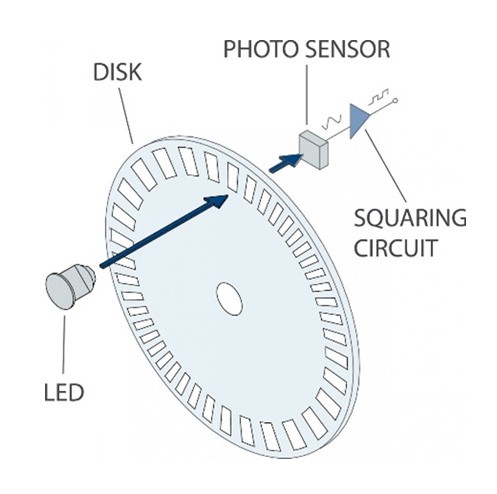The Concept of Direction
Fundamental to the correct operation of a conventional radar system is the concept of direction. Radar video must be correlated with the direction of the antenna before further processing, to ensure that detected targets can be referenced to real-world locations and are consistent between successive radar scans. A mechanism is required to establish antenna direction reliably and accurately. Two basic approaches are widely used.
Optical Approach
The shaft or rotary encoder typically uses an optical approach where a photodiode is illuminated by a light source through a rotating disk which is linked to the antenna shaft. The resulting pulses are counted to deduce the antenna orientation. A separate mechanism is used to reset the counter each revolution at a fixed orientation. The resulting signals are normally referred to as azimuth clock pulse/bearing pulse (ACP) and azimuth reset pulse/heading marker (ARP).

This approach is straightforward and low-cost. It has certain drawbacks. It is not suited to radars operating in sector scan mode where the direction of rotation is regularly reversed, as an incremental rotary encoder can only count in one direction. It is also subject to the effects of wear and dirt, resulting in unreliable performance.
Synchro Approach
The synchro transmitter has the same essential design as a motor in that it has a rotor, stator and a shaft. The shaft is coupled to the antenna shaft. The rotor is connected, via slip rings and brushes, to an excitation or reference voltage, typically supplied at a frequency of 50-400Hz with an amplitude of 25-150V. There are three stator coils offset from each other by 120°, often termed S1, S2 and S3...
Subscribe to continue reading this article, it's free.
Free access to Engineering Insights, authored by our industry leading experts.
You will also receive the Cambridge Pixel newsletter which includes the latest Engineering Insights releases.
Fill in the form below and you will be sent an Instant Access link.


